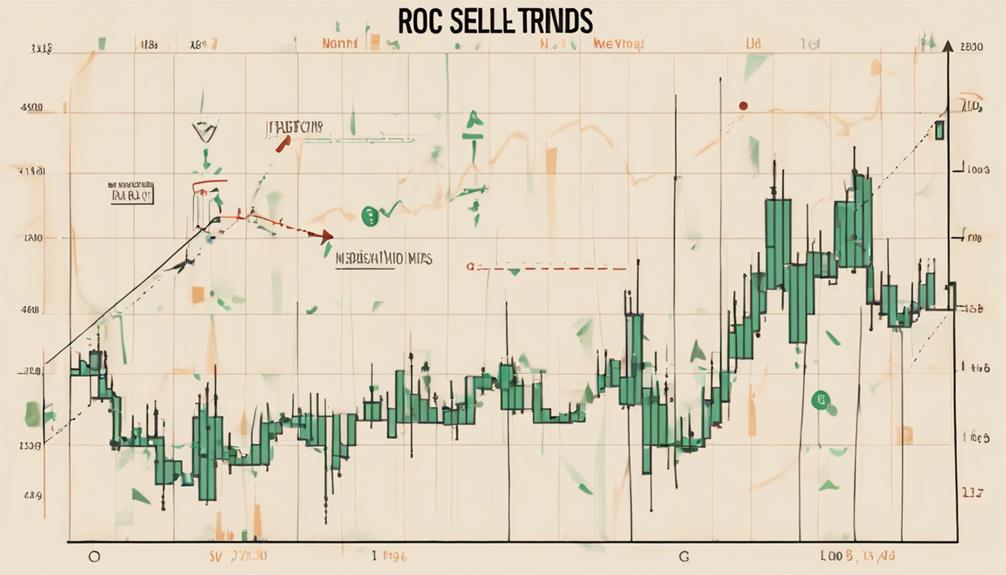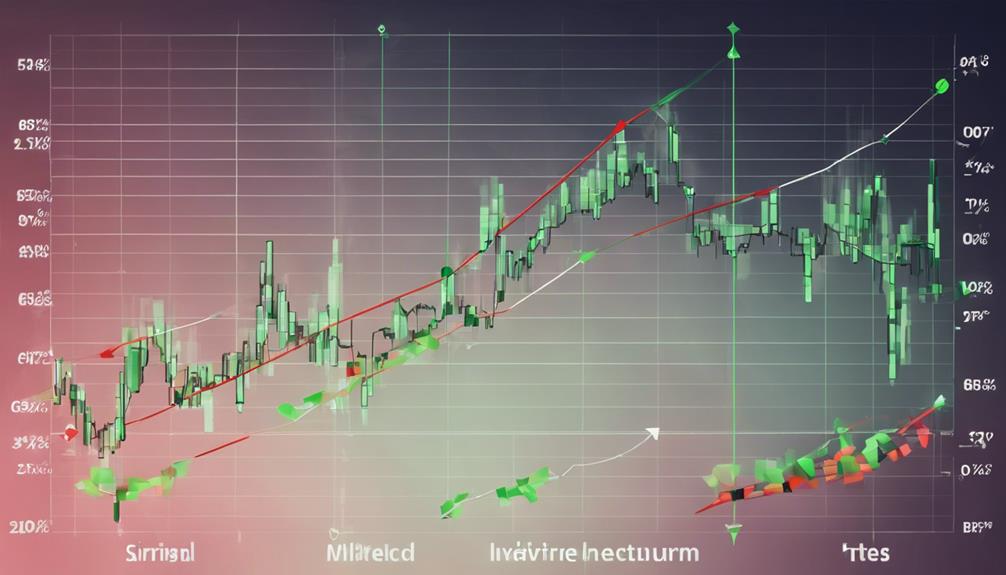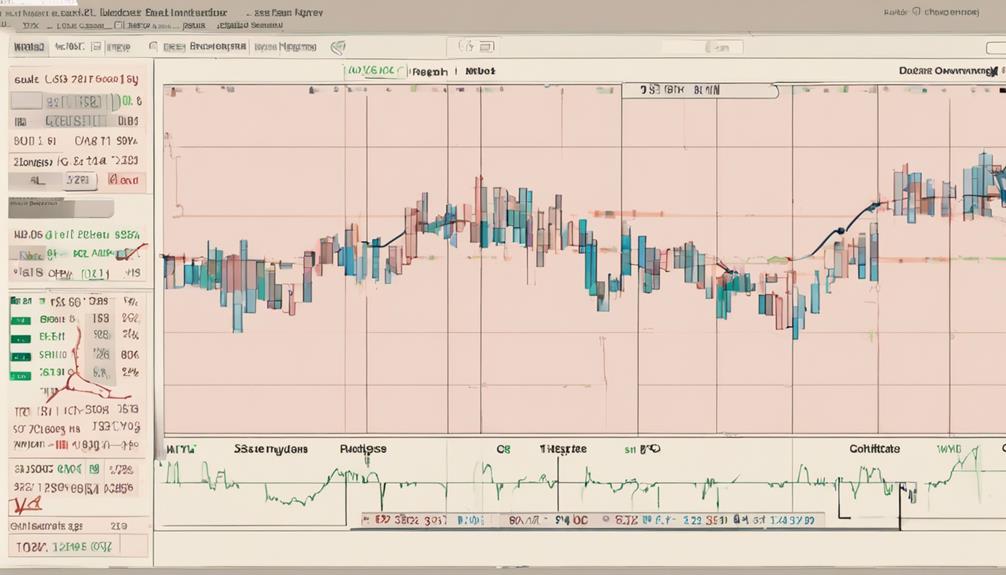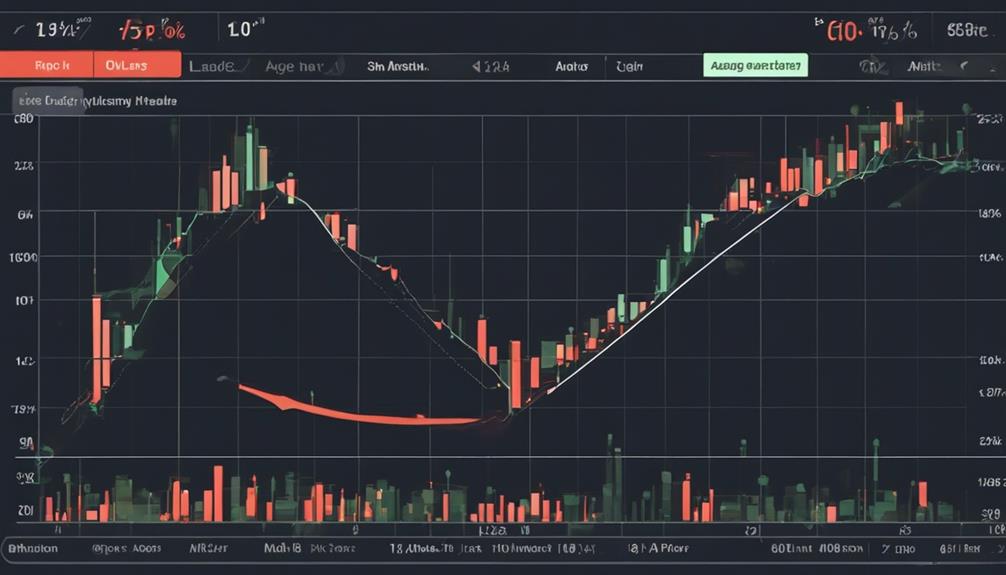Deciphering the ROC indicator is akin to unveiling a cryptic code that holds the key to understanding market trends. As traders venture into the realm of technical analysis, the ROC indicator stands as a valuable tool offering insights into price momentum and potential market shifts.
By unraveling the intricacies of this indicator, traders can gain a deeper understanding of market dynamics and make informed decisions based on data-driven analysis. The ROC indicator's ability to signal momentum changes and identify critical trading opportunities makes it a compelling asset for traders seeking to navigate the complexities of the financial markets.
Understanding ROC Indicator Calculation
The calculation of the ROC indicator involves determining the percentage change in price between the current closing price and the closing price observed n periods ago. This calculation is expressed as [(Current Close – Close n periods ago) / Close n periods ago] * 100.
Commonly used periods for ROC calculation include 12, 14, 25, and 200, depending on the trader's preference and the timeframe being analyzed.
ROC values above zero suggest a bullish momentum, indicating an upward price trend, while values below zero signify bearish sentiment, signaling a potential downward trend. The zero line in the ROC indicator acts as a centerline, helping traders identify shifts in momentum.
Extreme ROC values are used to pinpoint overbought and oversold conditions in the market, offering insight into potential reversals or continuation of trends. Understanding the ROC calculation is crucial for interpreting market trends and making informed trading decisions based on momentum analysis.
Applying ROC Indicator Interpretation

Building upon the understanding of the ROC indicator calculation, the application of ROC indicator interpretation in market analysis provides traders with valuable insights into price momentum and potential trading opportunities. When analyzing the ROC indicator in a technical analysis context, traders focus on key aspects to make informed decisions:
- Direction of ROC: Traders examine whether the ROC is positive or negative to determine the momentum in the market. Positive ROC values above zero signal bullish momentum, while negative values below zero indicate bearish sentiment.
- Magnitude of ROC: The magnitude of the ROC value reflects the strength of the price momentum. A higher positive ROC suggests a more robust bullish trend, whereas a lower negative ROC indicates a stronger bearish trend.
- Comparison with Moving Averages: Traders often compare the ROC indicator with moving averages to confirm trends. Crossing above the moving average may signal a potential buying opportunity, while crossing below could indicate a selling opportunity.
Implementing ROC Indicator in Trading

Utilizing the ROC indicator effectively in trading requires a comprehensive understanding of its calculation and interpretation to capitalize on market dynamics and make informed decisions.
The Rate of Change (ROC) compares the current price to the price n periods ago, indicating positive momentum when above zero and negative momentum when below zero. Traders frequently use ROC to identify overbought and oversold zones, confirm trends, and time entry and exit points.
By recognizing divergence signals such as bullish momentum or bearish divergence, traders can anticipate potential trend changes. Integrating ROC with other technical analysis tools can enhance trading strategies by providing additional confirmation signals.
This momentum indicator is versatile across various timeframes and markets, including stocks, commodities, and currencies, making it a valuable asset for traders seeking to improve their decision-making processes and optimize trading outcomes.
Exploring ROC Indicator Advantages

Exploring the advantages of the ROC indicator reveals its efficacy in providing traders with valuable insights into market dynamics and potential trade opportunities. The Rate of Change (ROC) is a powerful tool in the arsenal of technical analysis, offering the following benefits:
- Reversal Signals: ROC provides timely signals for potential reversals in asset prices, helping traders identify entry and exit points with precision.
- Momentum Oscillator: As a momentum oscillator, ROC helps traders gauge the strength of price movements, indicating overbought and oversold conditions for more informed trading decisions.
- Trade Timing: By calculating the percentage change in price over a specific period, ROC aids traders in determining optimal trade timing, enhancing the probability of profitable trades.
While the ROC indicator offers simplicity and versatility, traders should exercise caution as it may generate false signals in choppy markets. To mitigate this risk, traders often seek confirmation from other indicators before making trading decisions, ensuring a more robust analysis of market conditions.
Recognizing ROC Indicator Limitations

The limitations of the ROC indicator become apparent when market conditions exhibit volatility and erratic price movements, potentially leading to challenges in signal reliability and timeliness.
In choppy markets, the ROC indicator's sensitivity to price fluctuations can result in false signals, causing traders to make decisions based on inaccurate information. Moreover, the ROC indicator may lag behind sudden price changes, impacting the speed at which trading decisions are made.
To address these limitations, traders often complement ROC signals with other analysis tools to confirm the validity of the generated signals. Adjustments to trading strategies incorporating the ROC indicator may also be necessary to adapt to prevailing market conditions and improve performance.
While the ROC indicator is a valuable tool for trend analysis, its effectiveness is optimized when used in conjunction with other indicators to mitigate the challenges posed by its inherent limitations.
How Can I Use the ROC Indicator for Market Trend Analysis in a More Advanced Way?
To enhance your market trend analysis, consider utilizing efficient techniques roc indicator use. You can employ different time frames to identify trends and better understand market momentum. By combining the ROC indicator with other technical analysis tools, you can gain valuable insights and make informed trading decisions.
Frequently Asked Questions
How Do You Read a ROC Indicator?
Reading a ROC indicator involves interpreting positive values as bullish sentiment and negative values as bearish sentiment. Traders use ROC to identify price momentum shifts and potential trend reversals by analyzing percentage values for market trend strength and direction.
Which Indicator Is Best for Trending Market?
In trending markets, the Moving Average Convergence Divergence (MACD) indicator is widely regarded as one of the best for analyzing trends. MACD combines moving averages to identify changes in momentum, confirm trend strength, and spot potential entry/exit points effectively.
How Would You Use ROC to Predict the Stock Price Movement?
To predict stock price movements using ROC, analyze positive values for potential increases and negative values for possible declines. Identify trends, momentum shifts, and buy/sell signals. Spot divergences between price and momentum to forecast reversals. ROC trends and crossovers inform decisions on market trends.
What Is the Difference Between MACD and Roc?
In distinguishing between MACD and ROC, MACD tracks trend direction and reversals using moving averages, while ROC gauges momentum and price speed through percentage changes. Both are essential indicators in technical analysis, each focusing on distinct aspects of market behavior.
Conclusion
In the intricate dance of market analysis, the ROC indicator serves as a guiding light, illuminating the path of price changes and momentum shifts.
Like a skilled navigator, traders can harness the power of ROC to steer through the turbulent waters of market trends, avoiding pitfalls and seizing opportunities along the way.
By understanding the nuances of this indicator and integrating it into their trading strategy, investors can navigate the complex terrain of financial markets with confidence and precision.
